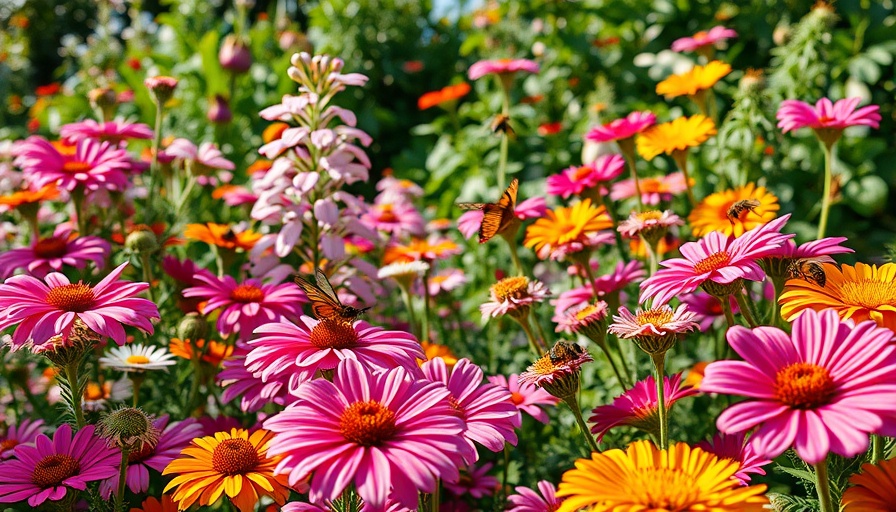
Welcome Pollinators to Your Garden
Envision transforming your garden into a vibrant sanctuary for pollinators like bees and butterflies, essential creatures for both ecosystem health and food production. According to the USDA, pollinators play a role in more than 75% of global crops, generating over $24 billion annually for U.S. agriculture. As populations of these vital insects decline due to habitat loss and climate change, the need for creating spaces that welcome them has never been more crucial.
Why Fostering Pollinators is Important
Besides their significant economic impact, pollinators are also key players in sustaining biodiversity. Wildflowers, fruits, and vegetables depend on these creatures for reproduction. Alarmingly, a study by the Xerces Society noted that 40% of native bee species in North America are at risk of extinction. Thus, a pollinator-friendly garden not only enriches your outdoor space but also contributes to the conservation of diverse species.
Essential Steps for All Gardeners
To effectively attract bees, butterflies, and other pollinators, consider these practical tips:
- Opt for Native Plants: Native flora provides the right nectar and pollen types. This is essential because plants like coneflowers and bee balm have co-evolved with local pollinator species.
- Continuous Blooming: Plan your garden with blooms from early spring to late fall to ensure food availability for pollinators throughout their active seasons. Aim for a range of colors and flower shapes to appeal to different pollinator types.
- Water and Shelter: Providing shallow water sources such as birdbaths and creating shelter with shrubs or trees can enhance your garden’s appeal.
Final Thoughts: A Call to Action
Creating a pollinator-friendly space doesn't require an advanced degree in botany. Simple changes can make your garden a welcoming oasis. Whether you're a seasoned gardener or a DIY enthusiast, these steps not only beautify your space but also support the ecosystem. Start making small changes today and watch as your garden buzzes with life!
 Add Row
Add Row  Add
Add 




Write A Comment